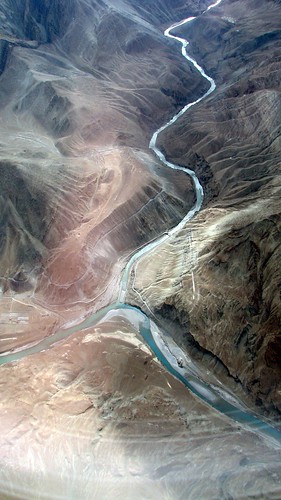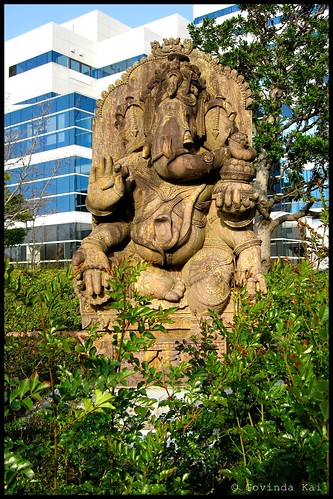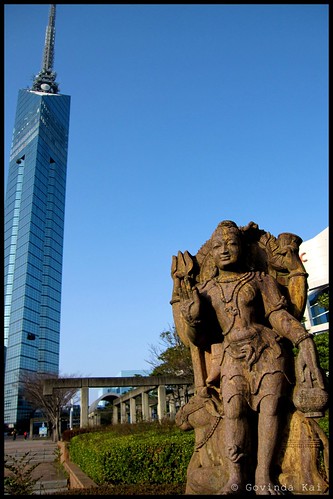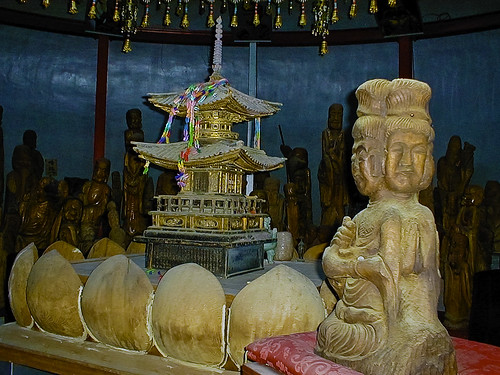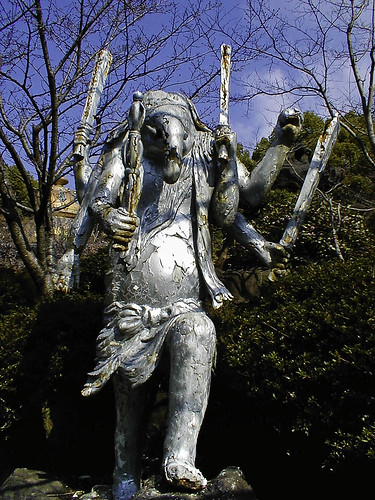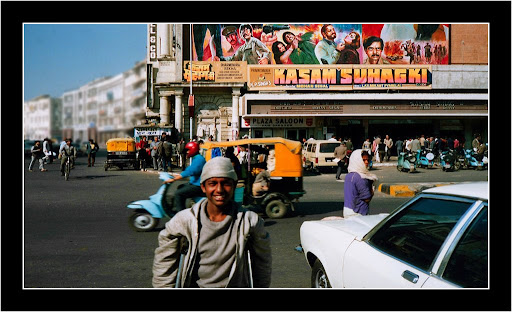
Wednesday, September 1, 2010
Thursday, June 3, 2010
Maharani of Sikkim, India (1900). Sthephen Wheeler, the donor of the collection, was presumably related to J. Talboys Wheeler, organiser of the 1877 durbar and author of 'The History of the Imperial Assemblage at Delhi' (London, [1877]). Full-length seated portrait of the Maharani of Sikkim, wife of Maharaja Thotab Namgue and stepmother of Maharaj Kumar Sidkyong Tulku. This photograph was possibly taken by John Claude White, c.1900 and marketed by Johnston & Hoffmann. The Maharaja of Sikkam's family originated from Lhasa in Tibet and settled in Sikkim in the mid 17th century. Puntso Namgye, the head of the family, was sent three Tibetan monks (professors of Myingmapa- the 'red cap' sect) to convert Lepchas of Sikkim to to their sect of Buddhism. The descendants of Puntso Namgye became the Raja's of Sikkim.
Tuesday, April 13, 2010
Blue becomes grey
This shot was taken out of a plane in april 2008 on my way back from Leh to Delhi. It shows the confluence of the rivers Zanskar and Indus in Nimmu.
Friday, March 26, 2010
Shiva & The Urban Lingam
I was surprised to find that Fukuoka's tallest building is surrounded by magnificent examples of Vedic deities, including Shiva, Ganesha, Parvati and a host of others including a rare statue of Marichi, who I have never seen before.
Collodion Emulsion (Wet Plate) Photo on Glass from OLD JAPAN (11)
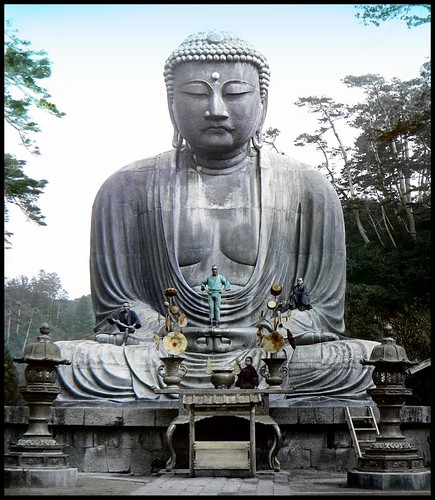
Collodion Emulsion (Wet Plate) Photo on Glass from OLD JAPAN (11), originally uploaded by Okinawa Soba.
Ca.1880s - early 1890s view of the DAIBUTSU ate Kamakura. Notice the steps placed against the base (behind the lantern on the right) to enable visitors to climb up on the statue to be photographed, or just sit in Buddha's lap and read a book.
The Priests have since changed their minds about such things. If you try that today, the police will come and haul you away.
See other DAIBUTSU images here, many with captions containing other information :
www.flickr.com/photos/24443965@N08/sets/72157604804207290/
Pagoda and Four-faced Buddha
Pagoda and wooden statue of a four-faced Buddha in the golden "Mahayenmar" temple.
Six-armed elephant god in need of a paint job
This statue in the "Mahayenmar" temple grounds reveals Hindu influence. It does not appear that anyone has been maintaining this place lately.
Standing Tobatsu Bishamonten
Standing Tobatsu Bishamonten
Japan, Heian period, late 10th-early 11th century
Bishamonten (Sanskrit: Vaishravana) is the Guardian King of the North, one of the four fierce protectors of the cardinal directions (Shitenno). Originally Hindu gods known as the Lokapalas, the four were adopted into Indian Buddhist pantheon. Along with eight other fierce kings, they also comprise the twelve Devas (Juniten) of Chinese and Japanese Esoteric Buddhism. Eight of them protected the eight directions and the remaining four symbolize heaven, earth, the sun and the moon.
Bishamonten is considered the most powerful of the Guardian Kings, as his direction, the north, is associated with danger. Tobatsu Bishamonten is one of several manifestation of the deity. In this form, he is worshiped alone. He stands supported by the earth goddess Jiten (Sanskrit: Prithivi) and two dwarf-demons, Niranba and Biranba. Befitting his protective function, he has an angry countenance and wears warrior's garb fashioned along the lines of Tang-dynasty Chinese military uniforms. Five seated Buddhas, now barely visible, are painted on his tall crown. In his left hand he supports a stupa, his main identifying feature. His right hand may have held a Vajra (a weapon symbolic of a thunderbolt) to ward off evil forces. With the exception of the arms, which are attached at the shoulders, the entire statue is carved of a single block of wood.

